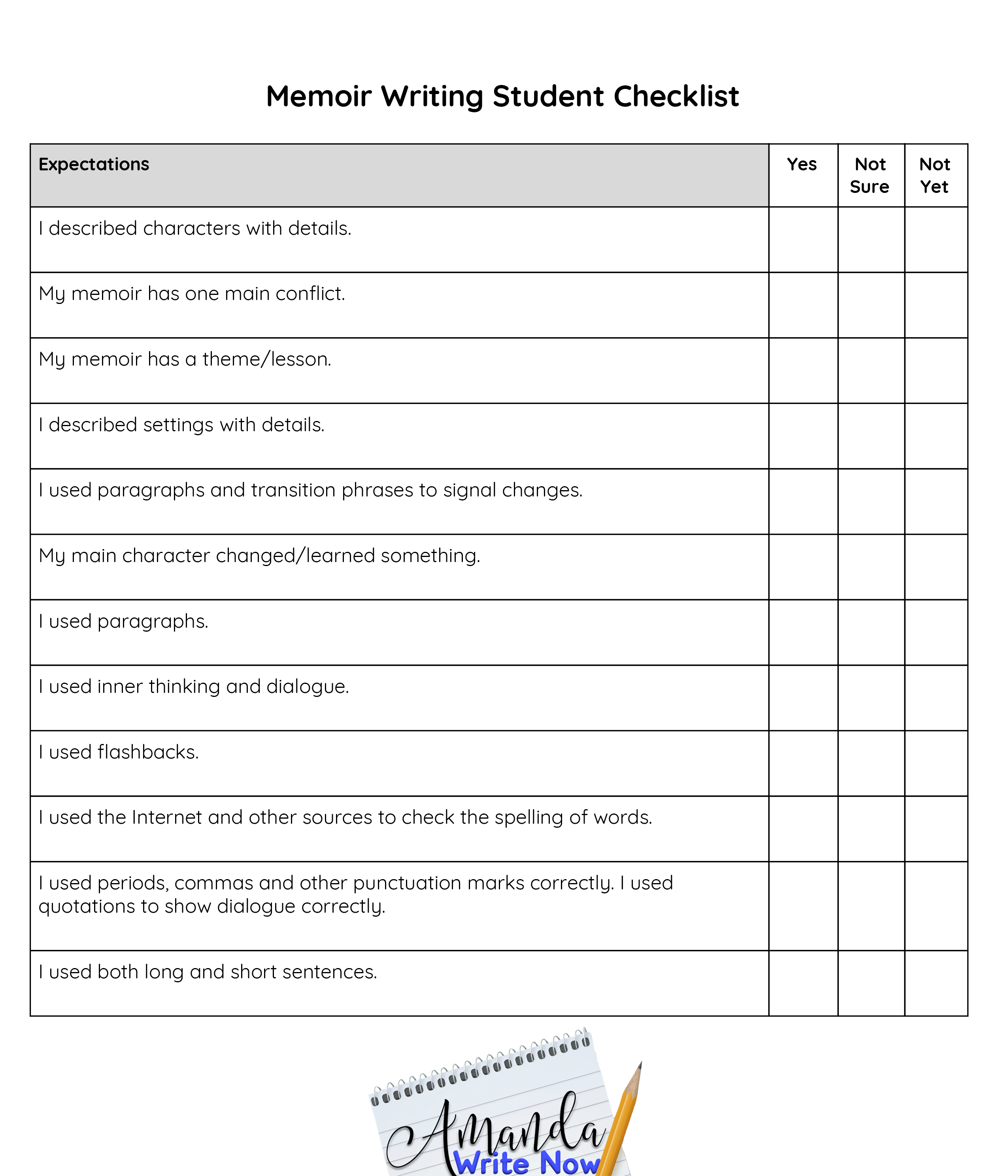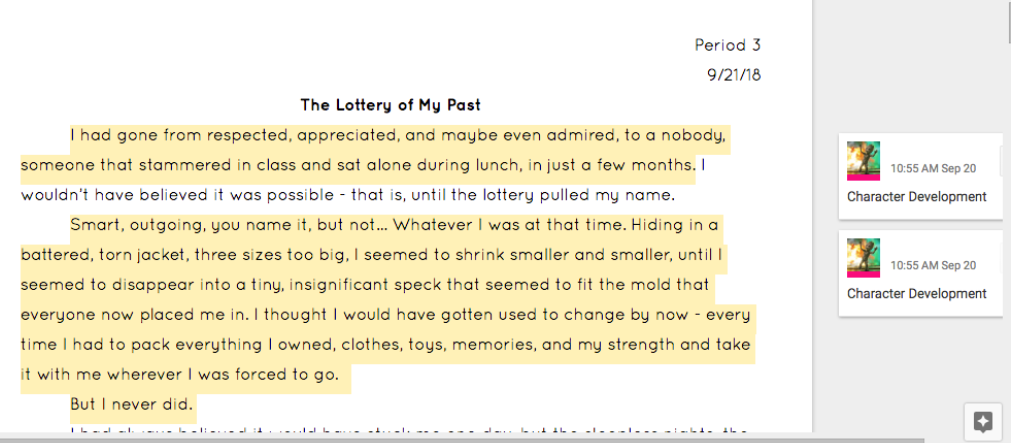
Don’t have time to read this article? Listen here!
Grading hundreds of papers is the bane of an English teacher’s existence. Don’t get me wrong. I love being able to get a thorough look into the minds of my students and their writing abilities. Reading their writing can actually be quite pleasurable.
It’s slapping a letter grade onto that writing that has always bothered me.
So in this article I’d like to go over ten things that have helped me make grading a much easier and satisfying process.
Let’s do this…
1. Use a Single-Point Rubric
I’ve been using rubrics for years now and have known, during all that time, that they are flawed. They just are. Students’ writing often doesn’t fit into the language of a rubric so we do the best we can, which often means making the points add up to the letter grade I think the paper deserves. It is so subjective but tries desperately to be objective with all the fancy language and numbers.
The reality is that student writing is so much more complicated than what a rubric can capture.
I recently discovered the single-point rubric when reading one of my favorite teacher blogs, Cult of Pedagogy. Jennifer Gonzalez had me at “single”. I read on and was sold pretty quickly. The rubric below is an example of a single-point rubric my teaching team and I used for our memoir writing unit.
You might immediately wonder where the points are. You could easily give each box a number. But, I decided to simplify things. I decided that if students met all expectations then they received a solid B, 85%. If they went into the advanced category I added two points for every skill they were advanced in, bringing them closer to an A. If they had any concerns then I took two points for each skill that was concerning. This particular student received an 87%.
This rubric was a dream to use because I could provide comments that spoke specifically to individual students. I didn’t have to circle some statement that somewhat applied to that student.

2. Use Kid-Friendly Language
Not only does the teacher need to understand the terms in the rubric, the students need to understand everything in it too. This makes it much easier for both of you to assess the writing. The way you can simplify your rubric is by picking key terms you will teach throughout your writing unit and including a very simple sentence using that term in your rubric.
Here are some of the terms I use in my rubrics and mini lessons:
3. Use Rubric to Guide Mini Lessons
I use my rubric to guide my entire unit. I show my students the kid-friendly rubric on day one of the unit. Then, during every single mini lesson I refer back to it. At the beginning of a mini lesson I’ll say, “today you will learn how to develop characters in your writing by using inner thinking”. Both of the phrases, “develop characters” and “inner thinking” are in my rubric and I’ll point directly at them while showing the rubric under a document camera.

4. Use Self-Assessments
After your unit, have students assess their own writing. Students are usually pretty accurate and honest when it comes to assessing their ability levels. I don’t usually even look at every students’ self-assessment. I think it is mostly beneficial for the student. However, I do look back at self-assessments when I’m not sure what grade to give the student even after using the rubric.

5. Make Students Comment in Doc
A co-teacher of mine introduced me to this idea and it’s brilliant! Before students turn their writing in to be graded, have them highlight parts of their writing that show the skills/terms from your rubric. So if you taught them to elaborate with precise detail during the climax then have them highlight that part of their writing and then comment with, “Elaboration of Climax”. Below, is an example of a student highlighting where they developed their character.

6. Read a Few Before Grading
It becomes very obvious, after reading a few papers, where the bar lies in terms of exceeding, meeting and falling below expectations. I find it helps to read about 5-6 papers that range in ability level in order to get a full understanding of the range of abilities in my classroom. Once I have this information I find grading easier somehow.
7. Don’t Edit for Students
As tempting as it may be to edit for students, don’t. Just don’t. It is a waste of time. Students will not learn from you editing for them. They will however learn from reading and writing more, which is why you do workshop, right? It’s why I do workshop. In a workshop classroom students spend the majority of the time…reading & writing. It’s so simple.
So, how do I teach editing then? There are many ways that I teaching editing skills. I model editing with my own writing in mini lessons, I have students help each other edit, I urge students to read their writing out loud and repeatedly. That’s about it.
8. Don’t Get Hung Up on Small Stuff
It’s tempting to overload students with lots of feedback so that they will improve quicker. But, if you want students to improve, confidence is so key. This is why it is so important to be more positive than negative when giving feedback to students. We must build up these students’ attitude toward writing first and foremost! So what do you do with a student who struggles with everything?!?! Focus on one and only one big concept from the list below….
Important big picture concepts: brainstorming lots of ideas; organization; having a main conflict in a narrative piece, main idea in an information piece, and a claim in an argumentative piece; writing with voice/personality; and of course the importance of taking time to revise and edit.
9. Give Audio Feedback
It is very convenient to leave quick feedback via audio. There are two Chrome Extensions that are great for adding audio to a student’s Google Doc. You can use Doctopus or Kaizena. I’m sure there are other extensions, however these are the only two I have experience using. There are other paid programs like Turnitin.com that allow you to leave audio feedback too. When I leave audio feedback it is usually to tell students something they did really well and one major skill they need to work on in their writing.
10. Teach the Writer not the Writing
Instead of focusing on the piece of writing that you have to grade in front of you, picture the student, the writer. Frame your comments in a way that speaks to what all writers do. This can be a powerful way to help students realize these skills are applicable to other writing they will do in the future. Here is an article from Two Reflective Teachers that provides great examples for how to make the shift from teaching the writing to teaching the writer.
Wrap Up…
Assessing writing does not have to be a painful process. It can actually be quite enjoyable if you use even just a few of the tips provided in this article. But, of all the tips in this article, the most important thing you should do today is throw out your complicated rubrics and replace them with the simplified single-point rubric. Students need to understand the language of your rubric and you need to refer to it every single day of your unit, so why not use a rubric that is easy to understand for both you and students!

0 Comments